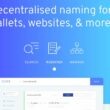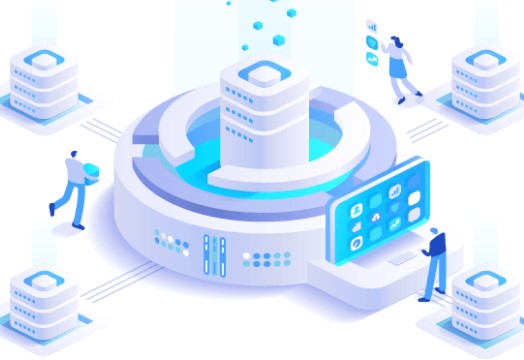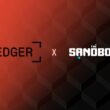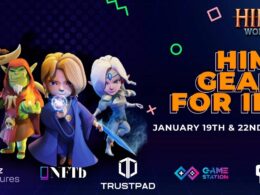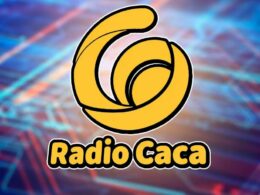*The Ontology token aims to provide decentralized identity and data solutions to Web3 users at a reasonable cost.
*This guide will take you through all that entails the Ontology ecosystem and how it works.
Launched in 2017, Ontology is a public blockchain network that aims to secure various business data using its smart contracts integration.
Since Ontology is a dual token platform, users are not limited to interacting with Ontology’s blockchain with their applications.
The Ontology platform features two coins – the Ontology coin known as ONT and the Ontology Gas token known as ONG
Users who hold ONT Token can take part in the decision making of the protocol.
On the other hand, ONG is earned when users lock up their ONT tokens on the Ontology platform.
What type of token is Ontology?
As mentioned previously, two different Tokens pump the Ontology ecosystem. To put it simpler, the platform uses a Proof of Stake( PoS) consensus algorithm for network governance.
When Ontology launched its Mainnet, the current ONT Tokens started as NEO tokens (NEP-5). NEO is the native cryptocurrency on the Neo blockchain used for holding, sending, spending, and staking.
Under the hood, there are the ONT and ONG Tokens. The first is used as the governance token, while the latter is used as a value anchoring tool for on-chain applications when ONT is staked.
Not to forget, ONT tokens are inseparable, while ONG will be divisible by multiple decimals. ONG will be generated over 22 years. The following is the distribution of ONG tokens
- Year One: 16 percent generated
- Year Four: 52 percent generated
- Year 12: 80 percent generated
How Ontology Works
Ontology is a blockchain platform that is unique from the rest. The Platform is capable of supporting multiple blockchain networks.
Because most BlockChains will only limit their users to using a specific blockchain governed by many sets of guidelines, a user can not alter Ontology steps to solve that.
Users and individuals who have chosen to use Ontology’s technology have more power than the platform itself.
In other words, Businesses and users can create blockchain applications that suits all their needs.
In addition, Ontology also allows businesses to take control of all their data by controlling and operating their proprietary blockchain that’s separate from everyone else’s by using distributed data exchange framework (DDXF) facilitates this.
Lastly, the ONT ID allows use in cryptographic identity proofs. Users and businesses can manage their data and enable blockchain-based multi-dimensional authentication provided by global verifiers.
What is Ontology coin used for?
Ontology coin uses a dual token model. It features the ONT and ONG Tokens. We will concentrate on the first, however.
The ONT coin is used for staking purposes to earn more income in the form of ONG tokens.
Moreover, Token holders of ONT can participate in the governance system. This means that they can take part in the voting process to process a new block in the blockchain
At writing, ONT has a circulating supply of 875,249,524 ONT coins. Data seen from coin Markert Cap suggest that ONT is up by 5.32%, with a trading volume of $116 Million
Is Ontology proof of stake?
Like many blockchain applications that use consensus mechanisms to secure their transactions, ontology is different since Proof-of-Stake drives the consensus mechanism.
When comparing Ontology with other known blockchains such as Bitcoin and Ethereum. Ontology is quite different as it employs VBFT, which combines Proof-of-Stake(Pos), Byzantine Fault Tolerant (BFT), and Verifiable Random Function (VRF).
But what does VBFT means? Yes, Pos is seen on Ontology, Ethereum, and Bitcoin. Still, when speed is considered, the Pos case used in Bitcoin can verify up to 7 transactions per second.
Ethereum can transact for approximately up to 15 seconds. However, VBFT Ontology can handle more than 1000 transactions per second.
Is Ontology an erc20 token?
Since its mainet launch, any trader or investor can fully access Ontology Network on the Ethereum ecosystem. In writing, the Ontology TestNet already supports EVM contracts.
In addition, the Ontology blockchain supports other contracts such as Wasm contracts, EVM contracts, and NeoVM contracts.
Publishing that the Ontology is an erc20 token can be challenging since the address format, and signature method supported by EVM are different from those supported by NeoVM/WasmVM, ORC-20 assets.
However, the good news is that the Ontology system must be stored in the Ethereum private key corresponding address beginning with 0x.
ONG can also exist in the Ethereum account address and Ontology account address.
What is Ontology gas token?
Remember that this isn’t the first time we have talked about ONG in this article. The ontology gas token is one of the coins contributing to the Ontology dual token system.
Launched in June 2018, ONT grants ONT stakers ONG rewards for securing the blockchain during staking.
To put it simpler, ONG is used as a value-anchoring tool for on-chain applications and is used in the transactions on the chain
The ONG token has a circulating supply of 304,060,227 ONG coins. It is currently trading at $26 Million with a live market cap of $263 Million.
Where can you stake Ontology?
Staking is the process of storing your ONT tokens to earn ONG rewards. As much as staking allows you to make more money, it has disadvantages.
The only risk may be the staking lock period, which may not be suitable for active traders or short-term holders. The period might take even a month.
To get the highest ONG rewards. We suggest using an official Ontology wallet such as ONTO mobile or OWallet for PC
We also suggest the following wallets Cyano Wallet and Ledger Nano S/X cold wallet. However, we recommend you do your research before diving into them
You should also have ONT tokens in your wallet and some ONG tokens to pay for gas fees. 0.05 ONG is required, but 1 ONG in your wallet is enough to cover it.
Can you mine Ontology?
You cannot mine Ontology tokens due to their consensus mechanism because Ontology Gas powers the consensus algorithm used by the Ontology ecosystem.
The same ONG rewards are paid to users holding ONT tokens that staked those coins. To acquire Ontology tokens, you will be able to do so through profitable activities on the platform.
Is Ontology legit?
The ontology network guarantees businesses and users total security of their data on the platform.
Furthermore, like all other blockchains, every single data transaction on the Ontology blockchain cannot be removed.
This makes it extra secure as it adds a layer of transparency for the company that installs the protocol. Ultimately, the Ontology blockchain is very safe.
Is Ontology a shitcoin?
Due to Ontology’s current market metrics, trading volume, and the number of users. The coin can not be described as a shitcoin
According to CoinPriceForecast, the year will end with Ontology selling for $0.9. The price will reach $1 in mid-2023.
In writing, the Trading volume for ontology is high, which will help push the price of Ontology.
Data seen from Coin Markert cap suggest that the coin is currently trading at position #132, with a live market cap of $571 million
How to buy Ontology
You can buy Ontology tokens on various exchanges among them; Binance, OKX, Upbit, BingX, DigiFinex, etc.
- 5 Technologies Powering The Metaverse
- What are P2E Guilds and How Do They Work?
- Smooth Love Potion (SLP): Axie Infinity’s Token Explained
- Top 5 E-commerce Crypto Tokens in 2022 by Market Cap
- Top 5 Web3 Identity Tokens in 2022 by Market Cap
- Top 5 TRON Ecosystem Tokens by Market Cap in 2022
- Top 7 DeFi Crypto Coins To Invest in 2022
- Top 7 Sports Crypto Tokens in 2022 by Market Cap
- Top 4 P2E Crypto Gaming Guilds With High Profit Potential
- 5 Promising Metaverse Crypto Coins With a Market Cap Below $200 Million

